The following sections describe the available heat transfer correlations (HTCs) in
Flow Simulator. Correlation equations and literature
references are included. All HTC options appear in the 1D-Thermal Convection Resistor.
In addition, the duct flow HTC options appear in the Tube/Pipe flow elements and the
Advance Orifice flow element.
| Nomenclature: |
Subscripts: |
| Nu: Nusselt Number |
lam: Laminar Regime |
| Re: Reynolds number |
turb: Turbulent Regime |
| Pr: Prandtl multiplier |
tran: Transition Regime |
 : Dynamic Viscosity : Dynamic Viscosity |
|
Heat Transfer Correlations:
Lapides-Goldstein:

Dittus-Boelter:

Sieder-Tate:
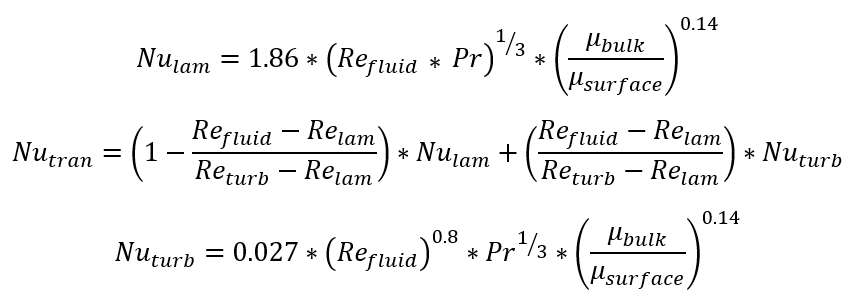
Gnielinski:
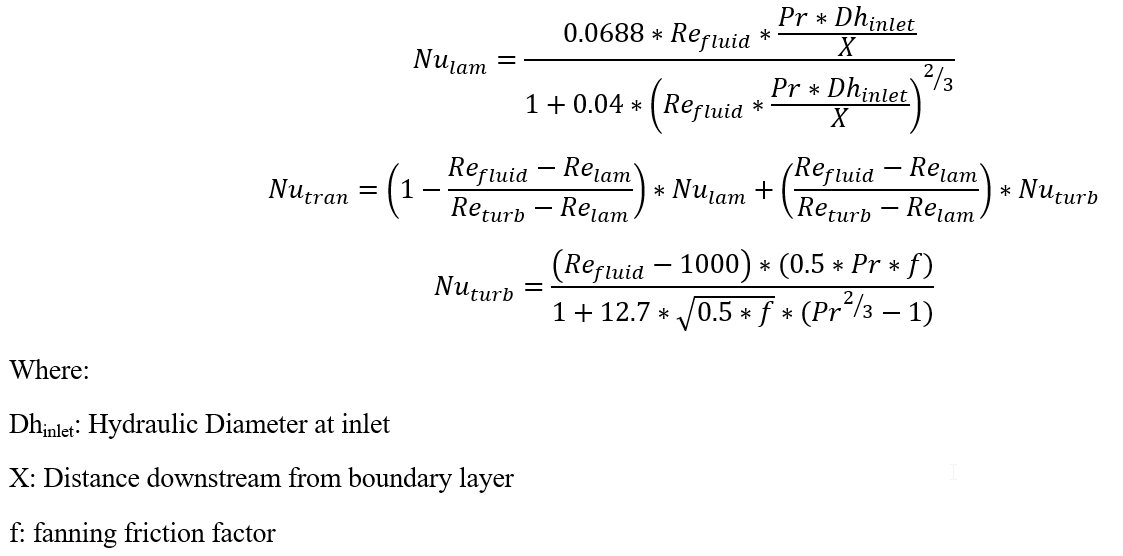
Bhatti-Shah:

External Heat Transfer:
The following section lists cross flow convection and free convection configurations that
are available in Flow Simulator. These options are
primarily used by connecting a 1D Thermal Convection Resistor to an internal chamber
in the flow path.
Colburn (Plate in Cross Flow):
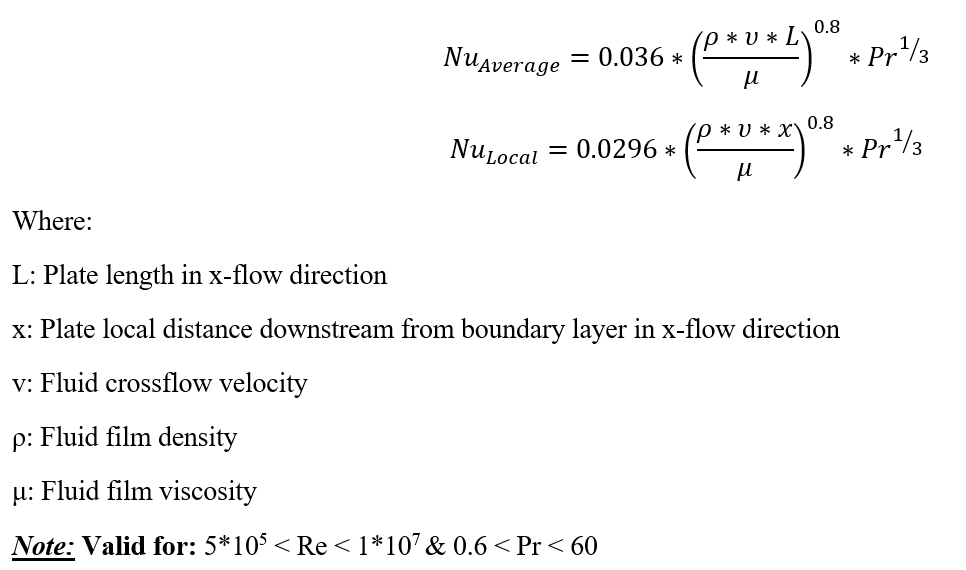
Incropera (Plate in Cross
Flow)
The flat plate correlation based on Incropera (reference 4) calculates an average
Nusselt number for the laminar flow over the entire plate, or the mixed laminar and
turbulent flow over the plate. The plate is assumed to have a constant surface
temperature.
For Re < ~500,000:
For Re > ~500,000:
Where:
Note: Valid for 10 < Re <
108, Pr > 0.6
Churchill-Bernstein (Cylinder in Cross Flow):

McAdams (Vertical
Prism in Free Convection):
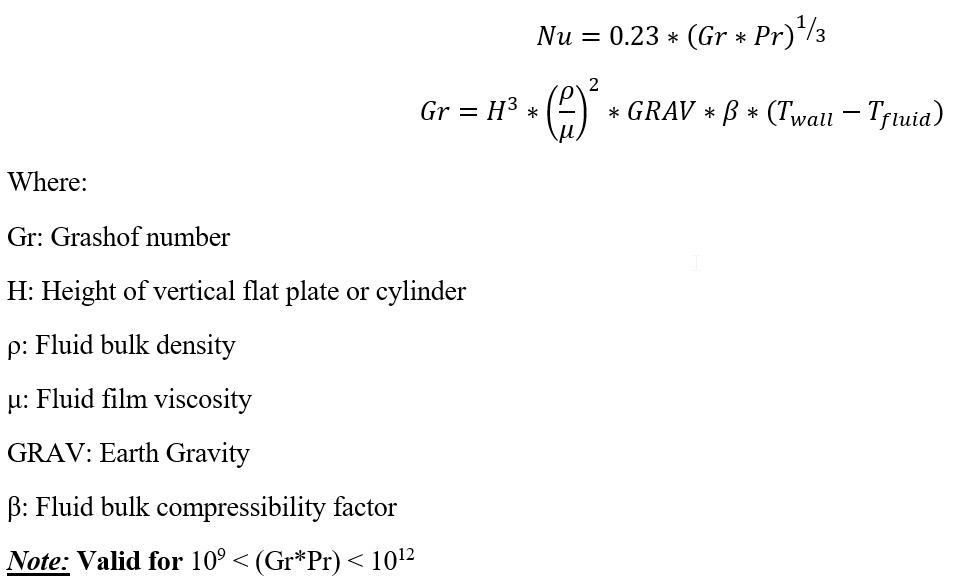
Horizontal Plate
in Free Convection:
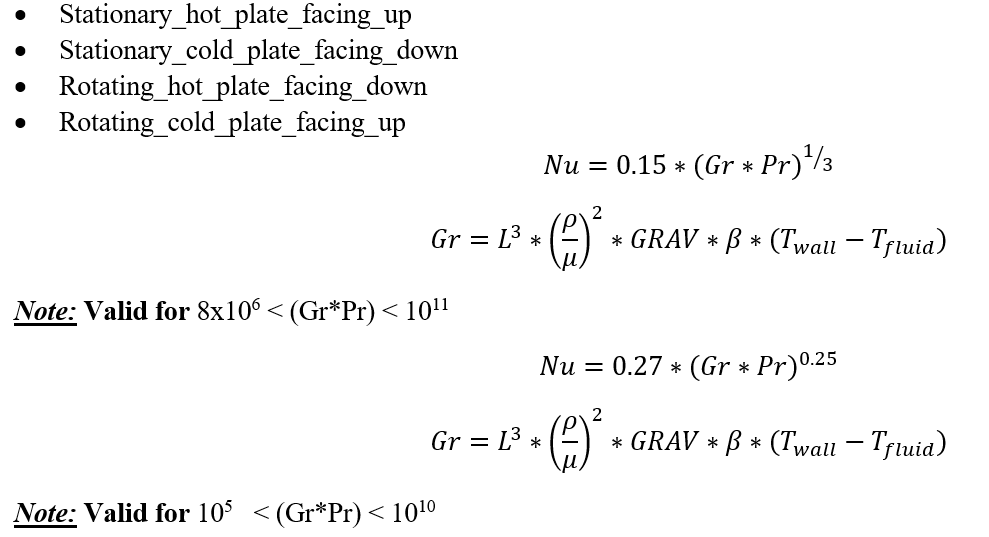
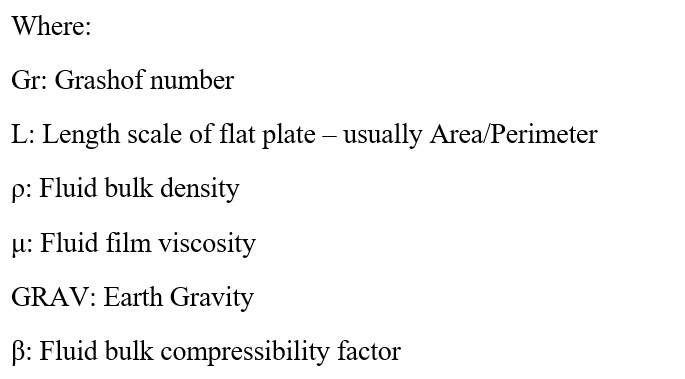
Churchill-Chu(Horizontal Cylinder in Free Convection):

Where:
Gr: Grashof number
Douter: Cylinder outside diameter
ρ: Fluid bulk density
μ: Fluid film viscosity
GRAV: Earth Gravity
β: Fluid bulk compressibility factor
Note: Valid for 106 < (Gr*Pr) <
1012
Turbulent Duct Flow Entrance Effects
The following entrance effects correlations compute an HTC multiplier called Hm. HTC
multiplier has limits and must be greater than unity. The Local option resolves heat
transfer correctly for all x locations along the axial length of a pipe. The
Averaged options use total pipe length L as the input. They correctly predict
overall heat transfer, but not local temperature variation.
Abrupt Contraction, Local x

Uniform Bellmouth, Local x

Abrupt Contraction, Averaged L

Uniform Bellmouth, Averaged L

Uniform Blend, Local x

Uniform Blend, Averaged L

Laminar Duct Flow HTC correlations
The
following Laminar HTC options are available in Flow Simulator. It is worth noting
that Laminar HTCs depend on distance from inlet x, and thus do not need a special
Entrance Effects multiplier.
Muzychka-Yovanovich:

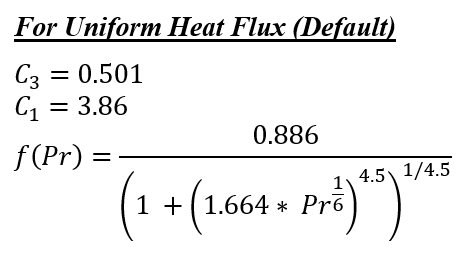
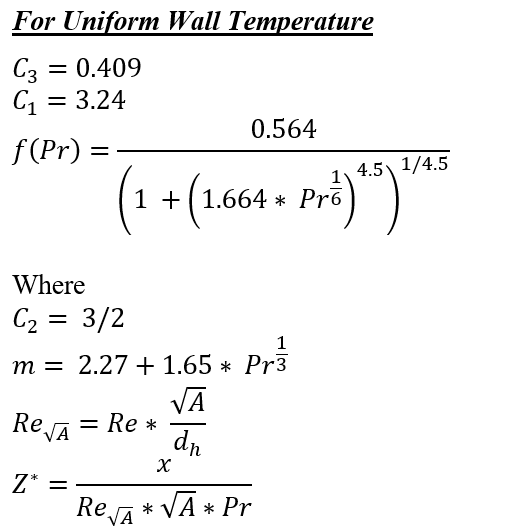
Hausen:












![]()
![]()

![]()
![]()
![]()



